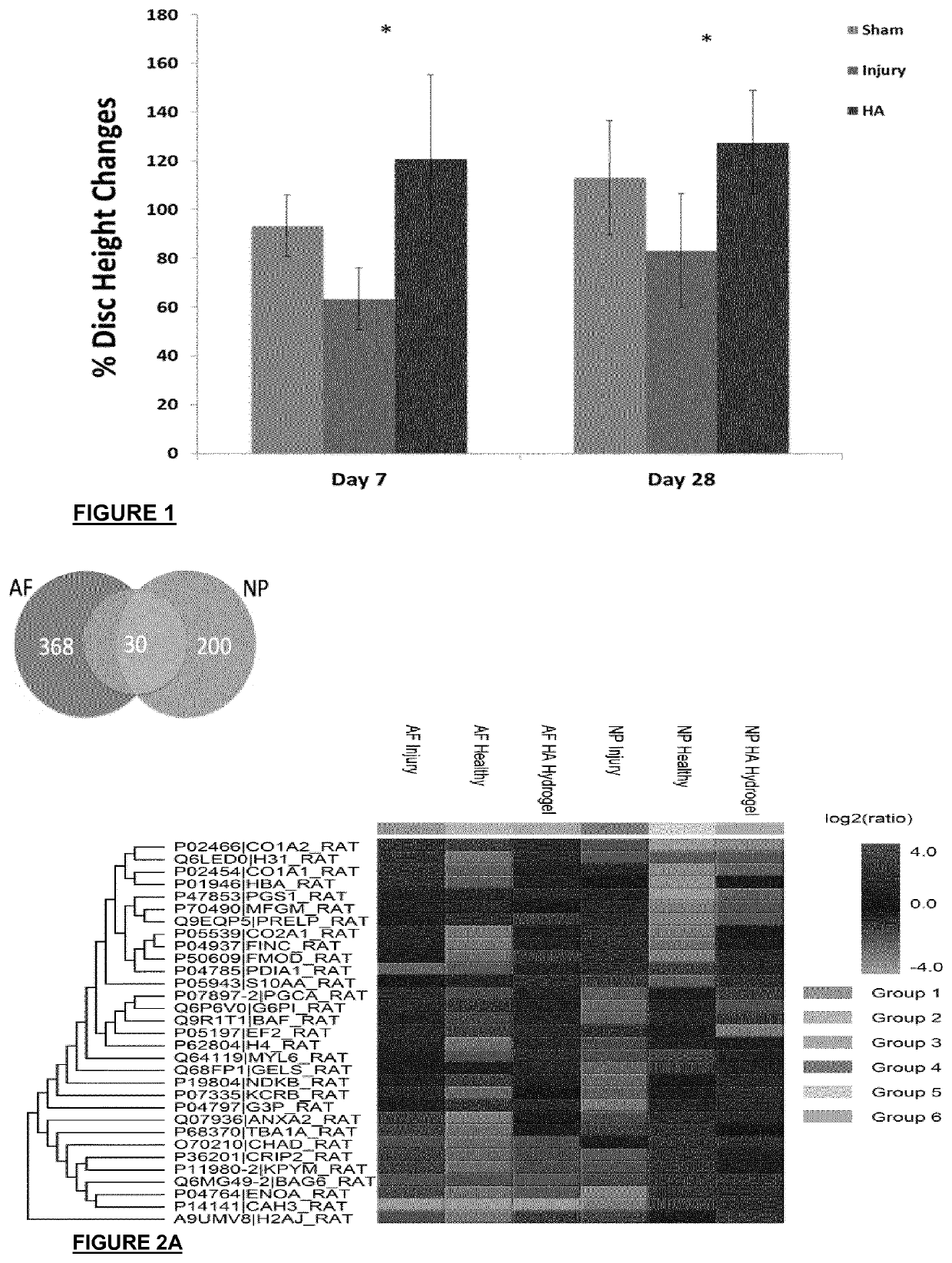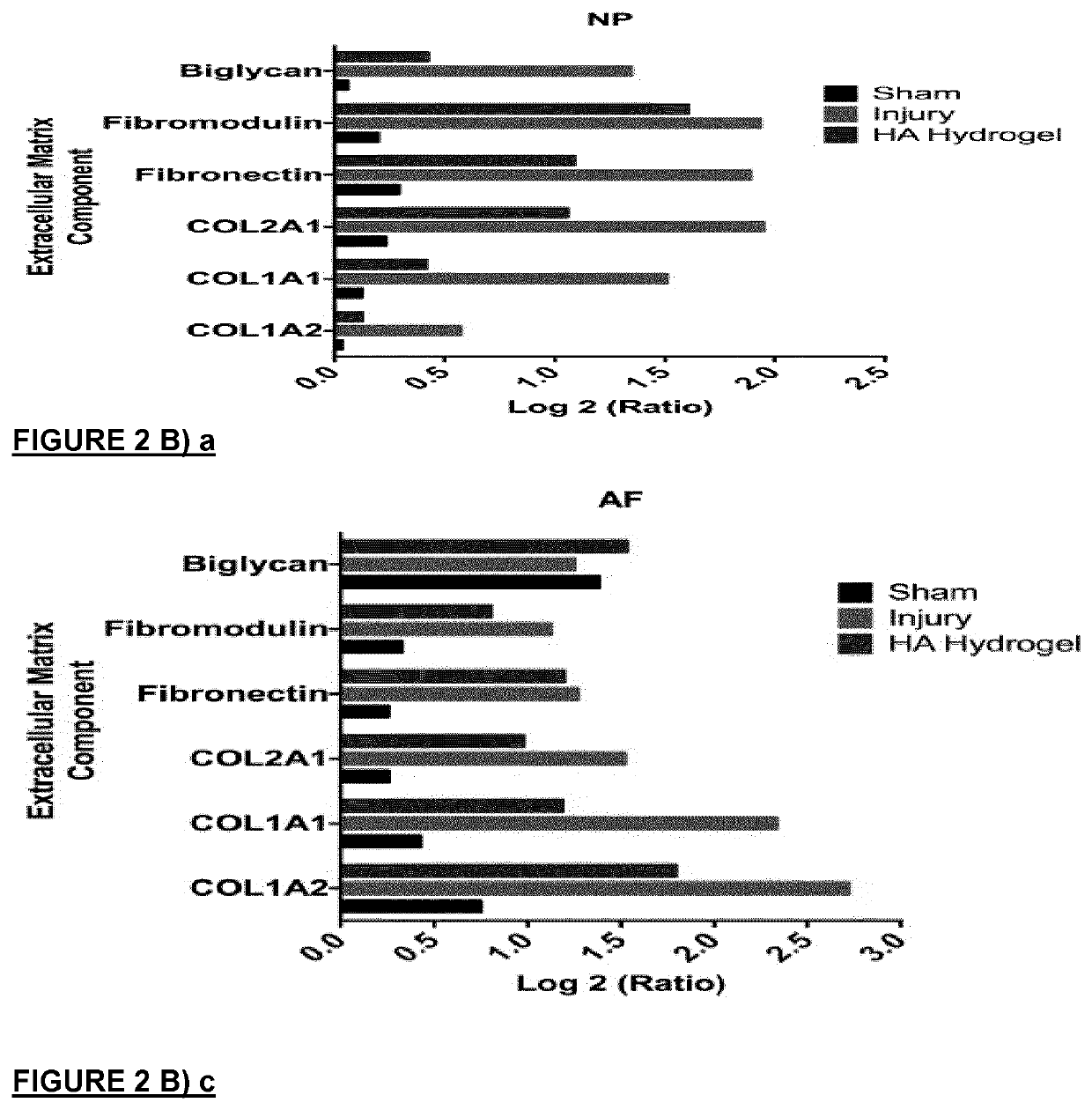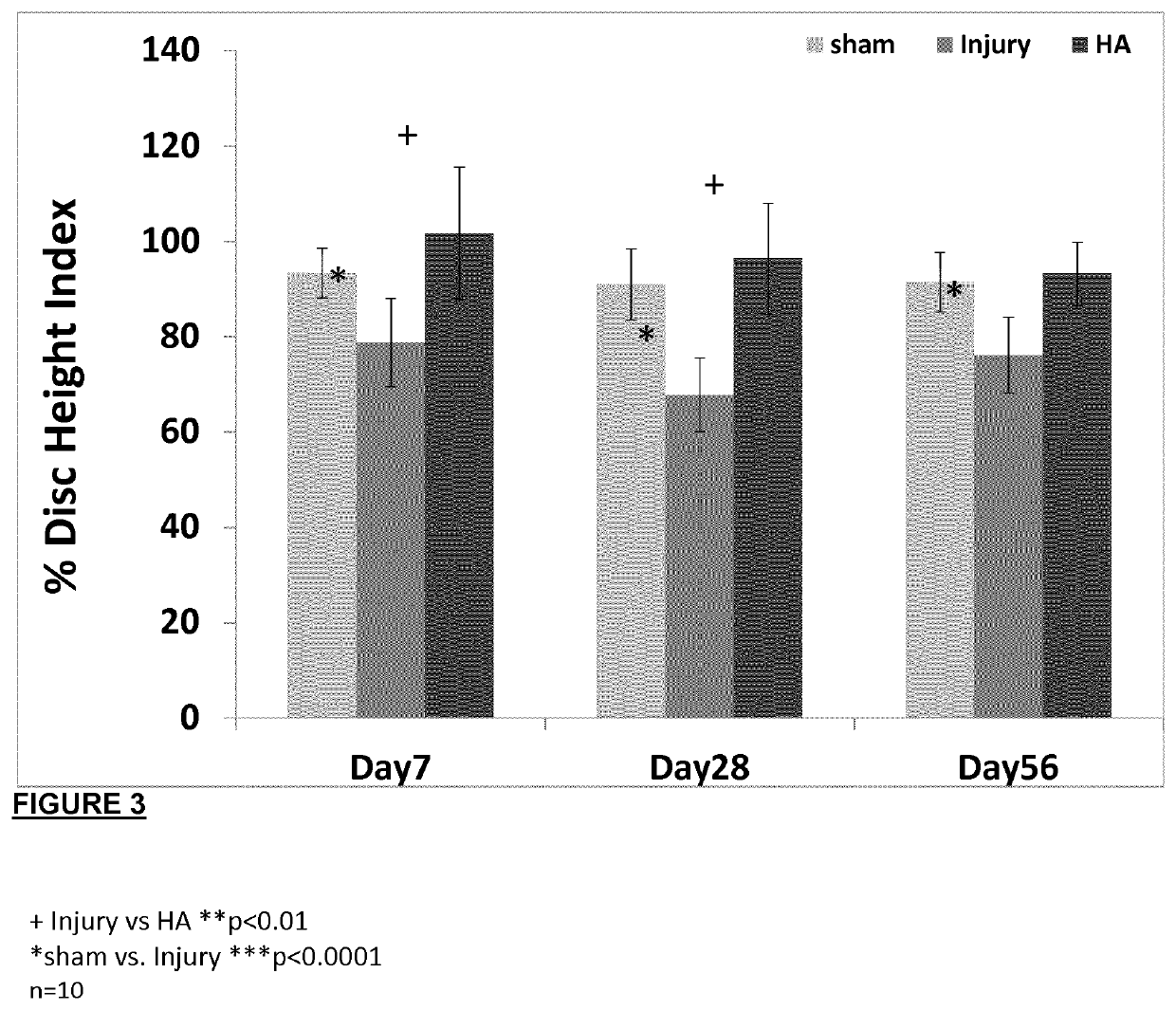Regeneration of diseases intervertebral discs
a technology of intervertebral discs and disease, which is applied in the field of regenerative of diseased intervertebral discs, can solve the problems of increased back pain, severe socio-economic impact, and extensive bone work, and achieve the effects of reducing discogenic pain, reducing discogenic pain, and increasing the height of the treated dis
- Summary
- Abstract
- Description
- Claims
- Application Information
AI Technical Summary
Benefits of technology
Problems solved by technology
Method used
Image
Examples
example 1
Protocol for Non-Cross Linked, Cross-Linked HA Hydrogels
[0081]Material specifications:
[0082]Hyaluronic acid: High molecular weight (HM Wt.) sodium hyaluronate 1 M. Da (Lifecore Biomedical, USA). CAS No.: 9067-32-7.
[0083]PEG-amine: Mw 2000 Da purchased from JenKem Technology USA (Allen, Tex.). CAS No.: 25322-68-3, purity >95%.
[0084]N-(3-Dimethylaminopropyl)-N′-ethylcarbodiimide hydrochloride (EDC) (Sigma-Aldrich, USA) CAS Number 25952-53-8, purity ˜100%.
[0085]N-hydroxysuccinimide (NHS): (Sigma-Aldrich USA). CAS Number 6066-82-6, purity 98%.
[0086]Phosphate buffered saline (Sigma-Aldrich, USA) CAS Number P4417-50TAB (pH adjusted to 6.5)
[0087]Formulation or compounding procedure for Non-cross linked gels:
[0088]1. Prepare Phosphate buffered saline by dissolving 1 tablet in 200 ml distilled water, and adjust the pH to 6.5 (store aside).
[0089]2. Slowly add required quantities of Hyaluronic acid sodium salt (3 mg / ml, 9 mg / ml, 15 mg / ml) in Phosphate buffered saline at ≤25° C.
[0090]3. Stir th...
example 2
Protocol for Crosslinking of HA
[0097]Material specifications
[0098]Hyaluronic acid: High molecular weight (HMwt) sodium hyaluronate 1.2×106 Da (Lifecore Biomedical, USA). CAS No.: 9067-32-7.
[0099]PEG-amine: Mw 2000 Da purchased from JenKem Technology USA (Allen, Tex.). CAS No.: 25322-68-3, purity >95%
[0100]N-(3-Dimethylaminopropyl)-N′-ethylcarbodiimide hydrochloride (EDC) (Sgma-Aldrich USA) CAS Number 25952-53-8, purity ˜100%
[0101]N-hydroxysuccinimide (NHS): (Sigma-Aldrich USA). CAS Number 6066-82-6, purity 98% Solvents: 20 wt % sodium sulphate solution in distilled water and 0.1 M MES (2-(N-morpholino)ethanesulfonic acid) buffer
[0102]Evaluation of synthetic protocol for cross-linking of HA (EDC / NHS)
[0103]1. 10 mg / mL conc. HA was dissolved in 0.1 M MES buffer for 2 hat room temperature
[0104]a. MES buffer facilitates rapid dissolution of HA to obtain a homogeneous solution
[0105]b. MES buffer (pH-6) also facilitates ionization of the carboxylic groups of HA (pKa-3-4)
[0106]2. A solution...
example 4
[0133]Rats were grouped into three groups: sham (n=20), injury (n=20) and injury with treatment implantable HA hydrogels (n=20). The hydrogel was implanted at the site of injury just after the injury was induced and the rats were assessed for pain behavior post-operative at days 1, 7, 14 and 28. The rats were then euthanized at day 7 and 29 to harvest the disc, spinal cord and blood plasma for analyses. Molecular pain marker of c-Fos and substance P were determined by qRT-PCR. Immunohistochemistry was used to identify reactivity to GAP43,
[0134]CGRP protein and TRPV1 in the disc, an innervation, sensory neuropeptide and nociception receptor marker. Lectin histochemistry methods were adopted to analyse glycan expression in the disc. Circulatory cytokines of IL-1β, IL-6, IFN-Y, TNF-α and IL-10 in the blood plasma were measured by multiplex ELISA. A schematic of the study design is provided in FIG. 4. Implantation of the HA hydrogel displayed increased latency time in the Hargreaves tes...
PUM
| Property | Measurement | Unit |
|---|---|---|
| weight % | aaaaa | aaaaa |
| weight % | aaaaa | aaaaa |
| weight % | aaaaa | aaaaa |
Abstract
Description
Claims
Application Information
 Login to View More
Login to View More - R&D
- Intellectual Property
- Life Sciences
- Materials
- Tech Scout
- Unparalleled Data Quality
- Higher Quality Content
- 60% Fewer Hallucinations
Browse by: Latest US Patents, China's latest patents, Technical Efficacy Thesaurus, Application Domain, Technology Topic, Popular Technical Reports.
© 2025 PatSnap. All rights reserved.Legal|Privacy policy|Modern Slavery Act Transparency Statement|Sitemap|About US| Contact US: help@patsnap.com



